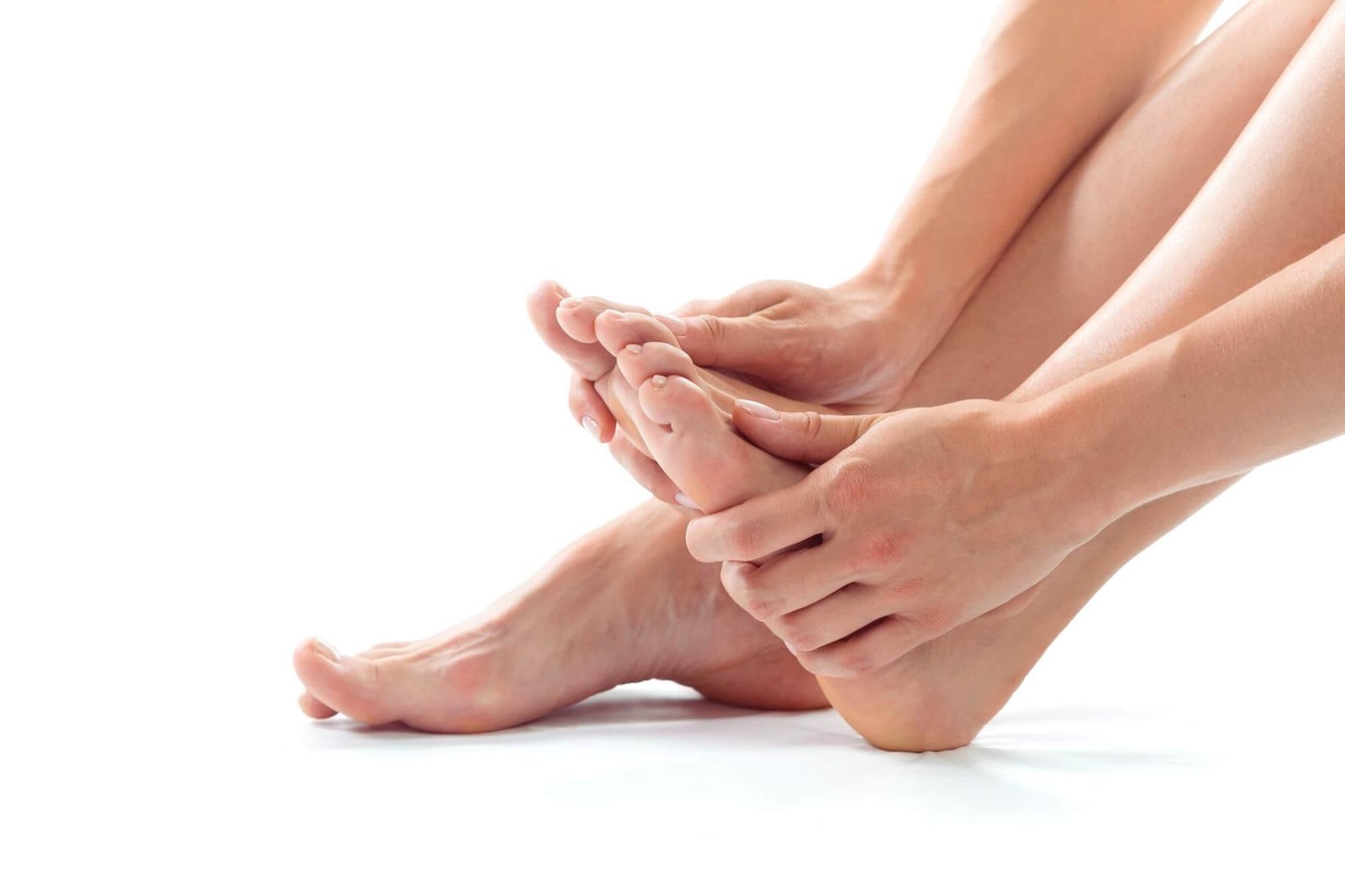When it comes to mobility and independence, our feet play a crucial role. However, joint pain in foot can significantly affect our ability to move comfortably. Whether it’s caused by an injury, arthritis, or other underlying conditions, foot joint pain can be both debilitating and frustrating. In this article, we will explore the causes, symptoms, and treatment options for joint pain in the foot, helping you gain a better understanding of this common condition and how to manage it effectively.
Understanding Joint Pain in the Foot
Joint pain in the foot refers to discomfort or inflammation that affects the various joints within the foot, including the ankle, midfoot, and toes. These joints allow for movement, stability, and balance. When the joints become damaged or diseased, they can cause pain, stiffness, and limited mobility, making it challenging to walk or engage in everyday activities.

Common Causes of Foot Joint Pain
There are several factors that can contribute to joint pain in the foot. Some of the most common causes include:
Arthritis: Conditions like osteoarthritis, rheumatoid arthritis, and gout can lead to joint pain in the foot.
Injury: Trauma, such as fractures, sprains, or strains, can damage the joints in the foot and result in persistent pain.
Tendonitis: Inflammation of the tendons in the foot can cause joint pain and difficulty with movement.
Overuse: Excessive stress or repetitive activities can strain the joints and lead to pain.
Nerve compression: Conditions like Morton’s neuroma or tarsal tunnel syndrome can compress the nerves in the foot and cause joint pain.
Symptoms of Foot Joint Pain
The symptoms of foot joint pain may vary depending on the underlying cause, but commonly include:
- Pain, ranging from mild to severe, in the affected joints
- Stiffness or limited range of motion
- Swelling, redness, or warmth around the joints
- Difficulty walking or bearing weight on the foot
- Joint deformities or misalignment
Diagnosis and Evaluation
When experiencing foot joint pain, it’s essential to seek medical evaluation for an accurate diagnosis. A healthcare professional will perform a comprehensive examination, which may include:
- Reviewing medical history and symptoms
- Physical examination of the foot and affected joints
- Imaging tests like X-rays, MRIs, or CT scans
- Blood tests to rule out underlying conditions like arthritis or infections
Non-Surgical Treatment Options
In many cases, non-surgical treatment options can effectively manage foot joint pain. Some of these include:
Rest and immobilization: Taking a break from activities that aggravate the pain and using supportive devices like crutches or orthotics.
Medications: Over-the-counter pain relievers, nonsteroidal anti-inflammatory drugs (NSAIDs), or corticosteroid injections may help reduce pain and inflammation.
Physical therapy: Specific exercises and stretches can strengthen the foot muscles and improve joint flexibility.
Assistive devices: Using supportive footwear, arch supports, or braces can provide stability and relieve pressure on the joints.
Natural Solutions That May Help Alleviate Foot Joint Pain
A revolutionary solution designed to promote joint comfort and flexibility.
Hot and Cold Therapy: Alternating between hot and cold therapy can provide temporary relief from foot joint pain. Apply a cold pack to the affected area for 15 minutes to reduce inflammation, followed by a warm compress or soak for another 15 minutes to promote blood circulation and relax the muscles.
Epsom Salt Soak: Adding Epsom salt to a warm foot bath can help reduce foot joint pain. Epsom salt contains magnesium, which can aid in muscle relaxation and reduce inflammation. Soak your feet for 20 minutes to experience the soothing effects.
Essential Oils: Certain essential oils possess anti-inflammatory and analgesic properties that can help relieve foot joint pain. Dilute a few drops of essential oil, such as lavender, peppermint, or eucalyptus, in a carrier oil (such as coconut or almond oil) and gently massage it into the affected area.
Turmeric: Curcumin, the active compound in turmeric, has been shown to have anti-inflammatory properties. Incorporate turmeric into your diet by adding it to dishes or taking turmeric supplements after consulting with a healthcare professional.
Ginger: Ginger is another natural anti-inflammatory agent that may help reduce foot joint pain. Prepare ginger tea by boiling fresh ginger slices in water for 10 minutes. Strain the tea, let it cool slightly, and drink it to potentially alleviate pain and inflammation.
Omega-3 Fatty Acids: Consuming foods rich in omega-3 fatty acids, such as fatty fish (salmon, mackerel, sardines), flaxseeds, and chia seeds, can help reduce inflammation in the body. Alternatively, omega-3 supplements may be considered, but it’s important to consult with a healthcare professional for proper dosage and suitability.
Gentle Exercise: Engaging in low-impact exercises, like swimming, cycling, or yoga, can help improve joint mobility and reduce foot joint pain. These activities provide gentle movement without placing excessive stress on the joints.
Maintain a Healthy Weight: Excess weight can add pressure and strain on the foot joints, exacerbating foot joint pain. Maintaining a healthy weight through a balanced diet and regular exercise can help alleviate stress on the joints and reduce pain.
Herbal Supplements: Certain herbal supplements, such as boswellia, devil’s claw, and bromelain, have shown potential in reducing inflammation and relieving joint pain. However, it’s important to consult with a healthcare professional before starting any new supplements to ensure safety and effectiveness.
Foot Massage and Stretching: Regularly massaging the foot and practicing gentle stretching exercises can improve blood circulation, reduce muscle tension, and promote joint flexibility. Consider using a tennis ball or a foot roller to massage the bottom of the foot and stretch the toes and ankles.
It’s important to note that natural remedies may vary in effectiveness from person to person, and it’s always advisable to consult with a healthcare professional before trying any new treatments or supplements, especially if you have an underlying medical condition or are taking medications.
Surgical Treatment for Foot Joint Pain
If conservative measures do not provide sufficient relief, surgical intervention may be necessary. The type of surgery will depend on the underlying cause of the foot joint pain and may involve procedures such as:
Joint fusion: Joining the affected joint surfaces permanently to reduce pain and stabilize the foot.
Joint replacement: Removing the damaged joint and replacing it with an artificial joint.
Arthroscopy: Minimally invasive surgery using a small camera and specialized instruments to visualize and treat joint problems.
Rehabilitation and Recovery
Following surgical procedures or even during non-surgical treatment, rehabilitation plays a vital role in restoring foot function and reducing pain. Physical therapy and exercises tailored to the individual’s needs can aid in the recovery process, improving strength, flexibility, and overall mobility.
Lifestyle Modifications for Foot Joint Pain
In addition to medical treatments, certain lifestyle modifications can help manage foot joint pain effectively:
Maintaining a healthy weight: Excess weight puts additional stress on the joints, so maintaining a healthy body weight can alleviate pain and reduce the risk of further damage.
Choosing proper footwear: Wearing well-fitting shoes with adequate support can provide cushioning and stability to the foot.
Avoiding high-impact activities: Engaging in low-impact exercises like swimming or cycling can minimize stress on the foot joints.
Practicing self-care: Applying ice or heat packs, performing gentle foot massages, and using orthotic inserts can provide relief and promote healing.

Prevention Tips for Foot Joint Pain
While not all instances of foot joint pain can be prevented, following these tips can help reduce the risk:
- Maintain a healthy lifestyle with regular exercise and a balanced diet.
- Wear appropriate footwear that provides proper support and cushioning.
- Warm-up and stretch before engaging in physical activities.
- Avoid overuse or repetitive movements that strain the foot joints.
- Listen to your body and take breaks when needed.
When to Seek Medical Attention
It is advisable to seek medical attention if you experience any of the following:
- Severe or worsening joint pain
- Inability to bear weight on the foot
- Persistent swelling, redness, or warmth around the joints
- Joint deformities or misalignment
- Symptoms that interfere with daily activities or sleep
- Prompt medical evaluation can help identify the underlying cause of foot joint pain and ensure appropriate treatment.
Conclusion
Foot joint pain can significantly impact our daily lives, making it essential to understand its causes, symptoms, and treatment options. By recognizing the signs and seeking early medical intervention, individuals can alleviate pain, improve joint function, and regain their mobility. Remember, a multidisciplinary approach that combines medical treatments, rehabilitation, and lifestyle modifications can provide effective long-term management for foot joint pain.





